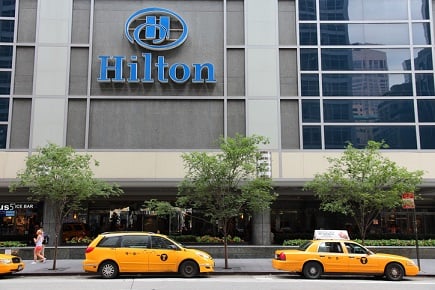Recognising the influence of the collective in sustaining health and wellness practices, the hotel chain Hilton introduced a 100-day Thrive Challenge.
The idea is that team members convene to set goals to ‘Thrive together’ for 100 days.
Instead of having a one-size-fits-all program, each department is given the opportunity to set up its own set of challenges as a group to promote better work practices and healthier eating.
The idea is to empower the team members to come up with measures that best fit their needs and personalities in line with the Thrive principle, ensuring ownership and sustainability.
“They are doing things in their own world that make them feel good about themselves, and make them feel healthier,” says Brendan Toomey, vice president of HR APAC at Hilton.
“We don’t mandate anything, we don’t tell anybody they must eat healthily or that they must stop drinking alcohol. We provide guidelines, we give them tips. We help them think about micro steps that they can take to help start their journey.”
Mindful leadership and lifelong learning are the two components which Toomey considers particularly significant.
The first step in mindful leadership is learning to communicate in a mindful way.
This can be broken down to the smallest things, such as emails and meetings – when and how they are sent out/set up, the amount of time spent on them – and the flow-on effect from these, especially given a general culture that expects constant connectivity through technology.
Hilton is looking to break away from that tradition and create a new culture with Thrive.
“How people use digital, how they use social [media] in such a way that they can pretty much be on all the time – we think that’s very unhealthy. We don’t want that type of behavior to be the norm,” says Toomey.
“We understand that there may be a need for certain roles at certain times to be connected. We’re not saying ‘just disconnect and forget about your job’. What we’re saying to our team members is, ‘At the end of the day, you control when you’re on and when you’re off.’”
The idea of flexible work practices now comes into play. While it might be easy to allow remote work arrangements for certain roles, it’s obviously not feasible for a number of roles within a hotel.
So instead of extending the classic work-from-home option, supervisors and managers pay extra attention to the roster and make sure there’s flexibility, and the staff are given more leeway on how and when they want to take time off work.
Toomey extends the concept of mindfulness to the area of mental health as well, in terms of how the team members are doing and how the leaders respond in turn.
“I think we’re in an environment where you may be working long hours – maybe you’re not eating as well, maybe you’re not getting enough rest, you get tired, therefore you’re not as gregarious and happy and lively as you might have been,” he says.
“So we’re working hard to get people to connect the dots between the pillars. They don’t stand alone, they’re all linked.”
“We encourage our leaders to connect, provide feedback, try and uncover, without prying and getting too personal, but just to understand what’s happening in that person’s life that we can support them more with.
“Our responsibility as an employer is, if we find that there is some medical concern, then, we would provide guidance and support and help point that person in the right direction.”
Related stories:
Four tips to improve mental health in the workplace
'Health and wellbeing is not just an absence of disease and injury'
How mindfulness boosts productivity and company culture

